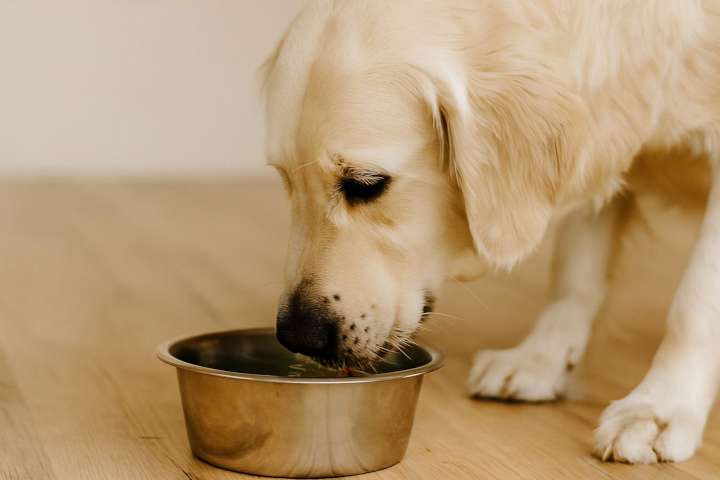Water is essential for your dog’s health—yet dehydration is more common than most owners realize. Whether due to illness, heat, or simply not drinking enough, dehydration can lead to serious problems if left untreated.
So how can you tell if your dog is dehydrated—and what can you do about it?
This guide explains how to spot the signs of dehydration, simple at-home checks, and when to call the vet for help.
Why Dehydration in Dogs Is Serious
Dogs need water for everything—from digestion and temperature control to healthy kidneys and joint lubrication. When your dog loses more fluid than they take in, their organs begin to suffer.
Dehydration can be caused by:
- Heat exposure
- Vomiting or diarrhea
- Fever or illness
- Kidney disease
- Diabetes or hormonal imbalances
- Not drinking enough (especially in hot weather or while traveling)
Common Signs of Dehydration in Dogs
Look for these warning signs:
- Dry or sticky gums
- Thick saliva
- Sunken eyes
- Lethargy or weakness
- Loss of skin elasticity
- Panting more than usual
- Refusal to eat or drink
- Dark yellow or low-volume urine
👉 Dogs with vomiting, diarrhea, or fever can become dehydrated very quickly.
How to Check for Dehydration at Home
- Skin Turgor Test (Skin Elasticity)
- Gently lift the skin on the back of your dog’s neck or between the shoulder blades.
- In a well-hydrated dog, the skin should snap back into place immediately.
- If it stays tented or returns slowly, that’s a sign of dehydration.
✅ Best for: Adult dogs with normal weight
⚠️ Less reliable in puppies, seniors, or dogs with loose skin
- Gum Check
- Lift your dog’s lip and gently touch their gums.
- Normal gums should feel moist and slick.
- Dehydrated gums feel tacky or dry.
Also check the capillary refill time:
- Press your finger gently on the gums until they turn white
- Release and see how quickly the pink color returns
- Normal: less than 2 seconds
- Delayed return may indicate dehydration or poor circulation
- Monitor Drinking Habits and Urine
- Is your dog drinking less than usual?
- Are they urinating less frequently or producing dark yellow pee?
- Are they showing signs of nausea or drooling?
Tip: Keep track of your dog’s water intake, especially in hot weather or when ill.
How Much Water Should a Dog Drink Daily?
General rule:
1 ounce (30 mL) of water per pound (0.5 kg) of body weight per day
Dog Weight | Water Needed Per Day |
|---|---|
10 lbs (4.5 kg) | ~1.25 cups (300 mL) |
25 lbs (11 kg) | ~3 cups (750 mL) |
50 lbs (22 kg) | ~5–6 cups (1.2–1.4 L) |
75+ lbs (34+ kg) | 7–9+ cups (1.6–2.1 L) |
Active dogs, puppies, and nursing females may need even more.
When to Call the Vet
Seek veterinary care immediately if your dog:
- Is vomiting and can’t keep water down
- Shows signs of severe dehydration (sunken eyes, collapsing, dry mouth)
- Has diarrhea for more than 24 hours
- Refuses to drink despite gentle encouragement
- Appears confused, weak, or glassy-eyed
Severe dehydration may require IV fluids and treatment of the underlying cause.
How to Encourage Your Dog to Drink More Water
- Keep multiple water bowls available (clean them daily)
- Add low-sodium bone broth or a splash of tuna water to make water more appealing
- Offer ice cubes as treats (some dogs love them)
- Use a pet water fountain—some dogs prefer running water
- Soak kibble or add wet food to increase hydration through meals
Conclusion
Final Thoughts on Is My Dog Dehydrated
Mild dehydration can often be treated at home, but severe cases can quickly become dangerous. Knowing how to spot the signs and perform simple checks at home helps keep your dog safe, especially during hot weather or illness.
Want a printable hydration tracker or emergency symptoms checklist? Visit our Dog Wellness Center to download tools and guides for daily care.

